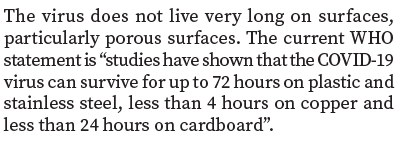We put together a summary on the basic protocols to follow concerning frequently touched surfaces.
We suggest you refer to the full documents but bear in mind that these provisions were written for large hotel complexes as well as small places. Read it in that context and be practical. Apply what works in your situation. What you’re trying to avoid is people touching the same items other people have just used.
Read the full TBCSA (Tourism Industry Standard Protocols) documents here:
Why should you prioritise sanitation of surfaces?
COVID-19 can live on some surfaces for anything between a few hours to a few days.

Because the virus can be transmitted by someone touching an infected surface, cleaning these surfaces becomes a priority.
In a guest room:
Certain objects in a guest room will be touched more frequently by your guests. Focus your cleaning and sanitisation efforts on these:
- phones
- kettles
- curtain pulls/curtain edges
- mini-bars
- trays
- amenity containers and bottles
- door handles
- furniture
- TV remotes and other movable items
- wall surfaces close to traffic/seating/bedside area
- all floors.
- Bathrooms should be thoroughly cleaned including all wall surfaces.
Another object you usually forget to clean is the room key, which is touched by both staff and guests.
In common guest areas:
Once again, focus on objects that are frequently touched:
- Water bottles, jugs & amenity bottles.
- Door handles – rooms/cupboards.
- Keys or key cards.
- Pens used by more than one person.
- Credit card machines – especially buttons.
- Light switches.
- Taps & mixers.
- Soap & sanitiser dispensers.
- Toilet roll holders.
- Toilet flush buttons/levers.
- Plug switches.
- Salt & pepper shakers & other tableware, e.g. toothpick holders/sauce bottles.
- Tablets & mobile devices.
- Computers, laptops & printers.
- Railings & banisters/balustrades.
- Public food-service utensils or receptacles/dispensers – handles/taps/buttons etc.
- Tables, counters & desks.
- Kitchen surfaces.
- Fridge handles & doors.
- Kitchen equipment.
- Armrests & backs of seats/chairs.
- Door handles and support grabs.
- Air-conditioning controls & vents.
- Window sills.
